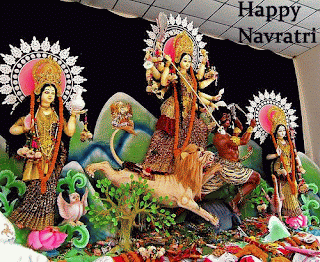22nd OCTOBER 2015 9th DAY NAVRATRI - DURGA PUJA -MAHISHASUR MARDINI KATHA(STORY)
- 08/12/13--00:01: delicious food options in Durga Pooja
Search Results
Devi Chamunda - YouTube
www.youtube.com/watch?v=eVl-T_nCeIU
Jan 22, 2012 - Uploaded by sagitaurean
Maa Parvati's Shakti form takes avatar of Maa Chamunda to killthe demon brothers Chand and Mund ...Mahakali and Rakhtbeej battle. - YouTube
www.youtube.com/watch?v=kAaP4qmeykI
Oct 2, 2014 - Uploaded by Divya Acharya
In Kāli's most famous legend, Devi Durga (Adi Parashakti) and her assistants, ... (CHAMUNDA DEVI TEMPLE IN KANGRA DISTRICT, 10KM ...
www.youtube.com/watch?v=z3cmjJ7XFAE
Jun 16, 2013 - Uploaded by vikas rathore
Located in Kangra district of Himachal Pradesh, Chamunda DeviMandir is at a ... Durga made a goddess with ...OM79 Vn Dr Ramakrishnagupta Mudalagiri- Durga Sandhi ...
https://www.youtube.com/watch?v=S32ZyF5WG_A
1 hour ago - Uploaded by Ramakrishnagupta Mudalagiri
Devi Chamunda appeared during this time and killed demons Chanda and Munda. Sandhi Puja prevails ...Maa Chamunda Temple | Kangra, Himachal Pradesh | India ...
www.youtube.com/watch?v=K4Mhsv2H2wU
Aug 7, 2015 - Uploaded by Indian Entertainment & News Channel
Chamunda (Sanskrit: चामुण्डा, Cāmuṇḍā), also known as ... is a fearsome aspect of Devi, the Hindu Divine Mother ...Maa Chamunda Devi- Sapt Durga Chalisa - Dailymotion
www.dailymotion.com/.../x1963ss_maa-chamunda-...
Jan 3, 2014
... assigned the task of eliminating the demons Chanda andMunda, generals of demon kings ... She fought ...Darshan of Chamunda Devi, Kangra, Himachal - YouTube
www.youtube.com/watch?v=LKh41iP2A-0
Aug 23, 2014 - Uploaded by VDOZ Devotional
Chamunda (Sanskrit: चामुण्डा, Cāmuṇḍā), also known as Chamundi, ... of Chanda and Munda, two monsters whom ...Bharatnatyam - Souraja Tagore - Devi Stuti - YouTube
www.youtube.com/watch?v=Cb6yS7ecIsM
Sep 23, 2013 - Uploaded by Pramantha Tagore
Bharatnatyam - Souraja Tagore - Devi Stuti. Pramantha Tagore ... She beheaded demons like Shumbha ...Mata Chamunda Devi Darshan from Himachal Pradesh only ...
www.youtube.com/watch?v=ko4vdRo9Bus
Oct 10, 2013 - Uploaded by Bhakti Sagartv
Mata Chamunda Devi Darshan from Himachal Pradesh only on Bhakti Sagartv ... of Chanda and ...Sanjukta Banerjee As Saraswati , Laxmi and Durga edit by ...
www.youtube.com/watch?v=jy08jdQzSIc
Jul 8, 2015 - Uploaded by Bubai Maity
... jekhane tumi Chanda-Munda-Raktobeej Nashini devi CHAMUNDA and dhumralochan nashini devi ...
Stay up to date on results for chamunda devi kills demons chanda munda.
Create alertSearch Results
Chamunda - Wikipedia, the free encyclopedia
https://en.wikipedia.org/wiki/Chamunda
Devi Purana describe a pentad of Matrikas who help Ganesha to kill demons. ... ofChamunda as slayer of demons Chanda and Munda, Devi Purana gives a ...Chandi - Wikipedia, the free encyclopedia
https://en.wikipedia.org/wiki/Chandi
In Devi Mahatmya, Chandi, Chandika, Ambika and Durga have been used ...Chamunda and Kalika to kill the demons Dumralochan, Chanda & Munda and ...Durga Puja Essentials - Kanchanmoni
www.kanchanmoni.com/puja_essentials.htm
Devi Durga killed, Chando and Mundo, the two asuras at "Sandhikhan" and thus ... Sabarno Raychoudhury of Barisha worshipped the Chamunda Devi by burning ... She is Devi Mahishasuramardini (Goddess Killer of the Buffalo Demon) who ..... When Sumbha's generals, Chanda and Munda, saw her, however, they ...
You've visited this page 2 times. Last visit: 20/10/15
Karikkakom Sri Chamundi Devi Temple - Facebook
https://www.facebook.com/permalink.php?story_fbid...id...
Main Shrine Chamunda, also known as Chamundi, Chamundeshwari and ... from the frown of the benign goddess Parvati to kill demons Chanda and Munda.Chamunda Devi Temple- Kangra District, Himachal Pradesh ...
www.vanamalaarts.org/chamunda-devi-temple-kangra-district-himachal-...
Oct 4, 2014 - The name of this Devi is a combination of Chanda and Munda, the twodemons whom she killed. She is closely associated with Kali and also ...India: A Sacred Geography - Page 265 - Google Books Result
https://books.google.co.in/books?isbn=0385531915
Diana L Eck - 2012 - Religion
Kali kills the demons Chanda and Munda and thus becomes known by the ... atChamunda Devi in the Kangra Hills of the north, she slays Chanda and Munda.Devi Chamunda - YouTube
www.youtube.com/watch?v=eVl-T_nCeIU
Jan 22, 2012 - Uploaded by sagitaurean
Maa Parvati's Shakti form takes avatar of Maa Chamunda to killthe demon brothers Chand and Mund ...The Book of Demons - Google Books Result
https://books.google.co.in/books?isbn=9351181448
Nanditha Krishna - 2007 - Body, Mind & Spirit
Munda was better known as Mahisha, and was killed by Kali or Chamunda, an emanation ... (Devi Mahatmya,Markandeya Purana) Chanda could havebeen theMilk, Honey and Grapes: Simple Hinduism Concepts for Everyone
https://books.google.co.in/books?isbn=1438209150
Kiran K. Mehta - 2008 - Religion
This demon is a representation of our ego and the 'I', the biggest hurdle in our ... Devi killing Mahishasura represents overcoming this huge hurdle. ... Nishumbha, Dhumralochana, Chanda, Munda and kills them one by one. ... Their names are Brahmi, Maheshwari, Kaumari, Vaishnavi, Varahi, Mahendri and Chamunda.
Kharghar, Navi Mumbai, Maharashtra - From your Internet address - Use precise location



















No comments:
Post a Comment